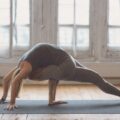Introduction to the Forward Fold
The forward fold is a fundamental yoga pose that offers numerous physical and mental benefits. Also known as Uttanasana in Sanskrit, this seemingly simple posture can be both challenging and rewarding. Whether you’re a seasoned yogi or a beginner, mastering the forward fold is a journey of self-discovery, patience, and gradual progress. In this article, we’ll explore compassionate approaches to improving your forward fold, focusing on overall wellbeing rather than just touching the floor.
The Benefits of Forward Folds
Before we dive into techniques, let’s consider why forward folds are so valuable:
- Stretches the entire back of the body, including hamstrings, calves, and spine
- Improves flexibility and posture
- Calms the mind and reduces stress
- Stimulates digestion and internal organs
- Relieves headaches and mild depression
Remember, these benefits come from practicing the pose regularly and mindfully, not from forcing yourself to touch the floor.
Embracing Your Current Abilities
The journey to touching your toes begins with accepting where you are right now. Every body is unique, and flexibility varies greatly from person to person. Instead of comparing yourself to others or feeling frustrated, approach your practice with kindness and curiosity.
Start by standing tall and simply bending forward as far as feels comfortable. Notice the sensations in your body without judgment. This awareness is the foundation of progress and will help prevent injury.
Gentle Techniques to Improve Your Forward Fold
Here are some compassionate ways to work on your forward fold:
- Bend your knees: This takes pressure off your lower back and hamstrings, allowing you to focus on lengthening your spine.
- Use props: Place yoga blocks or a chair in front of you to bring the floor “closer.” This allows you to experience the benefits of the pose without straining.
- Practice regularly: Consistency is key. Even a few minutes of gentle forward folds daily can lead to significant improvements over time.
- Incorporate dynamic movements: Before holding the pose, try slowly rolling down and up your spine several times. This warms up the muscles and increases blood flow.
- Focus on breath: Deep, steady breathing helps relax your muscles and mind, allowing you to ease deeper into the pose.
Listening to Your Body
As you work on your forward fold, it’s crucial to listen to your body. Discomfort is normal, but pain is a sign to back off. If you feel sharp pain, especially in your lower back or knees, come out of the pose immediately.
Remember, yoga is not about achieving a perfect pose but about connecting with your body and breath. Some days you may feel more flexible than others, and that’s perfectly okay. Honor your body’s needs and limitations each time you practice.
Incorporating Forward Folds into Daily Life
You don’t need to be on a yoga mat to benefit from forward folds. Here are some ways to incorporate them into your daily routine:
- Gently fold forward when you wake up to stretch your spine
- Take a forward fold break during long periods of sitting
- Use a modified forward fold (with bent knees) when picking things up from the floor
- Practice a standing forward fold while waiting in line or for the kettle to boil
These small moments of stretching can add up to significant improvements in flexibility and overall wellbeing.
Frequently Asked Questions
1. How long does it take to touch the floor in a forward fold?
There’s no set timeline for touching the floor in a forward fold. Progress depends on various factors including your starting flexibility, consistency of practice, and individual body structure. Focus on your personal journey rather than a specific goal, and you may be surprised by your progress over time.
2. Is it bad if I can’t touch my toes?
Not at all! Touching your toes is not a measure of overall health or fitness. Many factors, including bone structure and muscle length, affect your ability to reach your toes. The benefits of forward folds come from the practice itself, not from achieving a specific position.
3. Can forward folds help with back pain?
When done correctly, forward folds can help alleviate mild back pain by stretching the muscles of the back and promoting good posture. However, if you have chronic back issues or injuries, consult with a healthcare professional before incorporating forward folds into your routine.
4. Should I practice forward folds every day?
Daily practice can be beneficial, but listen to your body. If you’re feeling particularly tight or sore, it’s okay to take a break or modify your practice. Consistency is more important than intensity.
5. What if I feel dizzy during a forward fold?
Dizziness can occur when coming up from a forward fold due to a sudden change in blood flow. To prevent this, rise slowly and pause halfway up, or come up to a standing position gradually with your knees bent. If dizziness persists, consult with a healthcare provider.
Conclusion: Embracing the Journey
Mastering the forward fold is not about reaching a final destination but about embracing the journey. Each time you practice, you’re nurturing your body and mind, regardless of how far you can reach. Remember to approach your practice with compassion, patience, and a sense of curiosity.
As you continue to work on your forward fold, celebrate the small victories – the days when you feel a little more open, a little more relaxed. These moments of progress, however small, are testament to your dedication and the incredible adaptability of your body.
Whether you can touch your toes or barely reach your shins, the true mastery of the forward fold lies in the mindfulness and self-awareness you bring to your practice. Keep folding forward, both on and off the mat, and enjoy the lifelong journey of flexibility, strength, and inner peace that comes with this simple yet profound pose.









